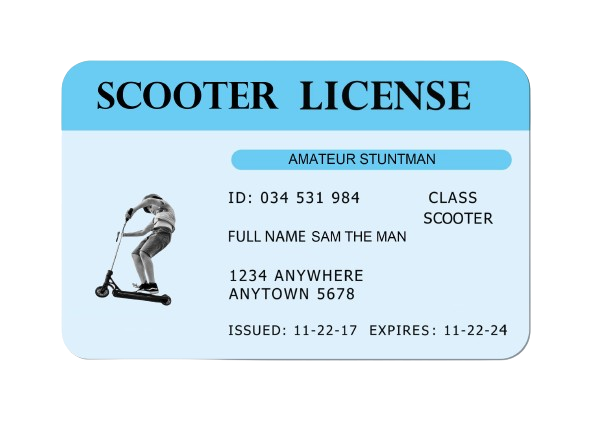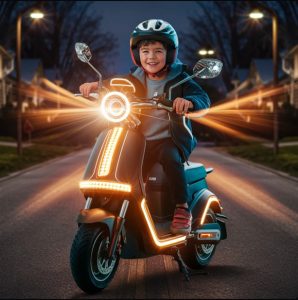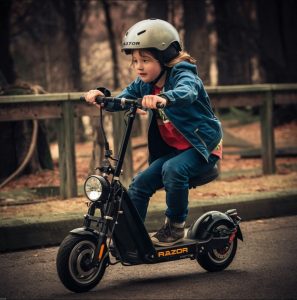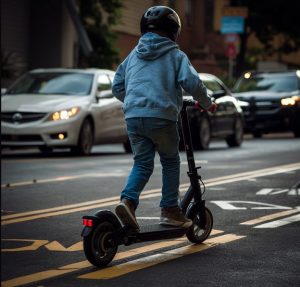none
Electric Scooter Buying Guide
Electric Scooter Buying Guide: Tips for Choosing Your Perfect Ride
Electric scooters have become an increasingly popular mode of transportation, offering a convenient and eco-friendly way to get around town. Whether you’re commuting to work, running errands, or simply enjoying a leisurely ride, choosing the right electric scooter can make a big difference in your experience. Understanding the key factors to consider when buying an electric scooter can help you make an informed decision.

There are various models and brands available, each with its own set of features and specifications. Different scooters excel in different areas, such as speed, range, portability, and comfort. Identifying what matters most to you—be it battery life, weight, or price—can narrow down your options significantly.
Safety is another crucial aspect to think about when buying an electric scooter. With features like robust brakes, reliable lights, and durable wheels, you can ensure a safer ride. Paying attention to safety features can greatly enhance your riding experience, ensuring peace of mind on the road.
Understanding Electric Scooters
Electric scooters have gained popularity due to their convenience, eco-friendliness, and versatility. This section aims to explore their history, types, and key features, providing valuable information for anyone looking to buy one.
History and Evolution
Electric scooters started as a novelty in the early 2000s. Initially, they were seen as toys for kids, but their design soon evolved to meet the needs of adult commuters. Technological advancements, such as improved batteries and motors, made them more efficient and reliable over time.
By the mid-2010s, electric scooters began entering urban environments as a practical means of transportation. With shared scooter services becoming widespread, they became a popular choice for short-distance travel. Today, they are seen as a legitimate alternative to cars and public transportation for many city dwellers.
Different Types of Electric Scooters
Electric scooters come in various categories tailored to different riders. Commuter scooters are lightweight and designed for daily use, focusing on portability and ease of storage. Performance electric scooters are built for speed and durability, offering higher top speeds and better battery life.
Budget models provide a more affordable option, ideal for beginners or occasional use. They might lack some advanced features but are sufficient for basic commuting. There are also electric scooters for kids, which prioritize safety and ease of use with lower maximum speeds and simplified controls. Each type serves specific needs, making it essential to choose based on the intended use.
Key Features of Electric Scooters
Key features to consider include battery life, motor power, and weight capacity. A scooter with a longer battery life can travel further on a single charge, which is crucial for longer commutes. Motor power determines the speed and ability to handle inclines.
Another important aspect is foldability, especially for those who need to carry the scooter on public transportation or store it in small spaces. Safety features like braking systems—whether disc brakes or regenerative brakes—and lighting for visibility are also critical. Considering these features helps in selecting the right scooter that meets both performance and safety needs.
How to Choose the Right Electric Scooter
Choosing the right electric scooter involves evaluating personal needs, comparing technical specifications, and considering reputable brands. Factors such as commute distance, speed, and scooter brands should be paramount.
Assessing Your Needs
Start by identifying your primary usage. If it’s for commuting, look for scooters with a range of at least 15-20 miles. This ensures you won’t run out of battery mid-ride. High-speed models like the Apollo or Kaabo are suitable for longer trips, while lighter scooters like the Unagi or Xiaomi are great for short commutes.
Consider the terrain of your usual routes. If hilly, look for scooters with strong motors and good suspension. Brands like Dualtron and EMove are excellent for handling rough terrains.
Storage and portability are also crucial. Foldable models such as Glion or Hiboy S2 make it easier to carry or store when not in use.
Comparing Scooter Specs
Evaluate motor power and speed. For city commuting, scooters with 250-500W are usually adequate. Higher power scooters like Apollo and Segway Ninebot may offer speeds up to 20-30 mph.
Battery capacity directly affects range. Lithium-ion batteries from brands like TurboAnt and E Tric often provide reliable performance. Look for scooters with battery capacities of at least 300Wh for longer distances.
Check the weight limit and material quality. Scooters from brands like Gotrax and Mercane feature robust builds that can support heavier riders and offer durability.
Considering Scooter Brands
Different brands offer unique advantages. Segway Ninebot and Xiaomi are known for their innovation and quality. Reliable models include the Segway Ninebot MAX and the Xiaomi Mi Electric Scooter.
Brands like Apollo and Kaabo are renowned for high performance and power. They often feature advanced suspension systems, suitable for rougher terrains.
For affordable and reliable options, consider Gotrax, Hiboy, and TurboAnt. Their scooters like Gotrax GXL V2 and Hiboy S2 are budget-friendly but still offer good range and speed.
Key Components and Performance

Understanding the key components of an electric scooter ensures that you choose a model best suited to your needs. Focus on motor power, battery life, tires, and suspension to make the most informed decision.
Motor Power and Top Speed
Motor power directly impacts an electric scooter’s top speed and acceleration. A more powerful motor, typically measured in watts, enables faster speeds and quicker acceleration. For urban commuting, motors around 250-350 watts usually suffice. However, for higher speeds or hillier terrain, 500 watts or more may be necessary.
Top speeds vary widely. Most commuter models offer speeds between 15 to 20 mph. Higher-end models may support speeds up to 40 mph. Consider your local speed limits and safety requirements. Opt for a scooter with matching top speed and motor power to suit your commute.
Battery Life and Range
Battery life affects how long you can ride on a single charge. Most electric scooters have lithium-ion batteries. Capacity is often measured in amp-hours (Ah). Typical scooters offer battery capacities ranging from 5 Ah to 20 Ah. Larger batteries provide longer ranges but may increase the scooter’s weight and charge time.
Range, the distance a scooter can travel on one charge, depends on battery capacity, motor power, rider weight, and terrain. Advertised ranges usually vary between 15-40 miles. Be aware that real-world ranges might be lower than stated. Choose a scooter with a range slightly greater than your typical journey to avoid running out of power.
Tires and Suspension
Tires and suspension significantly affect ride comfort and safety. Common tire options include solid and pneumatic (air-filled) tires. Pneumatic tires offer better shock absorption and a smoother ride but require more maintenance. Solid tires are puncture-proof and low-maintenance but generally less comfortable.
The suspension system helps absorb shocks from uneven terrain. Scooters may come with front, rear, or dual suspension. A good suspension system is essential for riders who frequently navigate bumpy roads or prefer higher speeds. Evaluate both tire type and suspension to ensure a comfortable and stable ride.
Selecting the right electric scooter involves assessing these key components. This ensures you find a model that matches your performance needs and riding style.
Safety and Regulations
Riding an electric scooter safely requires understanding its features and adhering to local laws. The following sections will address the braking system, safety features, and various riding conditions.
Braking System and Safety Features
A reliable braking system is essential for safety. Most electric scooters come with either disc brakes, drum brakes, or electronic brakes. Disc brakes are often considered the most effective, providing strong stopping power. Drum brakes are low-maintenance and work well in different weather conditions. Electronic brakes are smooth and require less effort to use.
Other important safety features include lights and reflectors. Bright front headlights and rear tail lights ensure visibility. Side reflectors increase the scooter’s visibility to others at night. Additionally, considering protective gear like a helmet and pads can significantly reduce the risk of injury.
Riding Safely in Different Conditions
Riding an electric scooter in various conditions requires preparation. In wet weather, brakes might be less effective, and surfaces can become slippery. Ensure the scooter has good traction tires and reduce speed. Proper lighting is crucial during low-visibility times, such as early morning or dusk.
In rough terrain, choose scooters with durable suspension to handle bumps and maintain ride quality. Avoid uneven or dangerous paths to prevent accidents. Always stay alert, and use proper signaling to indicate changes in direction to others.
Compliance with Local Laws
It is important to comply with local laws and regulations when riding an electric scooter. These can include age restrictions, speed limits, and designated riding areas. Some regions may mandate the use of helmets and restrict riding on sidewalks.
Always be aware of local traffic laws and respect pedestrian spaces. Compliance ensures not only your safety but also the safety of others. Check your area’s specific requirements before riding to avoid fines and ensure responsible usage.
Comfort, Portability, and Design
When choosing an electric scooter, it’s important to balance comfort, ease of carrying, and overall design. Riders should pay close attention to how an electric scooter feels during use and how conveniently it folds for transport.
Deck and Handlebar Design
The deck of an electric scooter plays a key role in comfort during rides. A wider deck allows for a more stable and comfortable stance, especially for longer journeys. Anti-slip materials on the deck ensure safety by preventing slippage.
Handlebars should be adjustable to accommodate riders of various heights. Well-padded handles reduce hand fatigue. Foldable handlebars add to portability, making it easier to store and carry the scooter.
Ease of Transportation
Portability is crucial, especially for urban commuters. A lightweight scooter is easier to carry up stairs or onto public transport. Look for models that feature quick and secure folding mechanisms.
Some scooters have collapsible stems and handlebars, which significantly reduce their size when folded. The total weight when folded is important for those who will need to carry the scooter frequently.
Aesthetics and Build Quality
The design and build quality of an electric scooter affect both its performance and longevity. A sleek, modern design is appealing and can reflect the rider’s personal style. High-quality materials, such as aluminum alloys, enhance durability.
Aesthetic features such as finishes, colors, and lighting can personalize the scooter. Build quality also impacts the scooter’s resilience against daily wear and tear and weather conditions.
By focusing on these aspects, riders can find an electric scooter that meets their needs for comfort, portability, and design.
Additional Considerations
When shopping for an electric scooter, it’s crucial to consider factors like budget, warranty, and user feedback to ensure a satisfying purchase. These aspects help you make an informed decision and find a model that meets your needs.
Price and Budget
Consider how much you are willing to spend on an electric scooter. Prices can vary significantly based on features, build quality, and brand.
Segway models, for instance, might come with a higher price tag but offer excellent quality and reliability. It’s essential to compare prices across different retailers and look for sales or discounts.
Remember to factor in additional costs such as accessories and maintenance. Striking the right balance between cost and features can help you find a scooter that fits your budget without compromising on quality.
Warranty and Manufacturer Support
A strong warranty and reliable manufacturer support can save you from headaches down the road. Look for scooters that come with warranties covering essential parts like the battery and motor.
Established brands like Segway often provide better support and easier access to replacement parts. Before making a purchase, check the warranty terms and see if the manufacturer or retailer offers any extended warranty options.
Knowing that you have dependable support can give peace of mind and protect your investment.
User Reviews and Recommendations
Reading user reviews and getting recommendations can provide valuable insights into the performance and reliability of an electric scooter.
Look for reviews on reputable shopping platforms or forums and pay attention to common praises or complaints. Recommendations from friends or family who own electric scooters can also guide you.
Tangible feedback from other users helps you identify potential issues or notable benefits that may not be apparent from the product description alone. Prioritizing models with positive reviews can lead to a more satisfying and trouble-free ownership experience.
Maintenance and Care
Proper maintenance ensures your electric scooter runs smoothly and lasts longer. Key areas to focus on include conducting routine checks, managing repairs, and following long-term care tips.
Routine Checks and Servicing
Regular inspections help identify potential issues before they become serious. Check battery levels, tire pressure, and brake condition frequently. Cleaning the scooter regularly prevents dirt buildup which can affect components.
Monthly, inspect the lights and ensure they work correctly. Tighten all screws and bolts to maintain structural integrity. Lubricate moving parts like the chain or suspension. Keep the battery charged and avoid draining it completely to prolong its life.
For professional servicing, consider scheduling a check-up every few months. It ensures all systems are functioning correctly and wears parts are replaced timely.
Repair and Spare Parts
Occasional repairs are necessary to keep the scooter in top condition. When the tires wear out, replace them immediately to avoid accidents. Similarly, keep spare brake pads handy for quick replacements.
Battery issues often arise due to frequent use. If the battery isn’t holding a charge, it may need replacement. Purchase genuine spare parts from the manufacturer to ensure quality and compatibility.
Handlebar grips, lights, and fenders also may need attention. DIY repairs are possible with proper tools and guides, but professional help ensures safety and reliability.
Long-Term Care Tips
For optimal long-term performance, store the scooter in a dry, cool place. Extreme temperatures can damage the battery and other components. When not in use, turn off the scooter to conserve battery life.
During winter, avoid riding the scooter in wet or icy conditions as it can lead to accidents. Cover the scooter with a protective sheet to prevent dust and moisture accumulation.
Regular software updates might be necessary for smart scooters. These updates can improve performance and fix bugs. Keep up with the manufacturer’s recommendations for hassle-free operation over the years.
Making the Purchase

It’s essential to find a trustworthy store, try out a scooter before committing, and follow through with a solid purchase process to ensure you get the best value.
Finding a Reliable Retailer
Look for reputable retailers with positive reviews and a strong reputation. Checking online reviews or asking friends for recommendations can help. Make sure the store has a good return policy and offers warranties.
Consider stores that specialize in electric scooters rather than general retailers. These stores often have better expertise. Compare prices across different retailers to find the best deals. Don’t fall for offers that seem too good to be true, as they may indicate poor quality or a scam.
Test Riding Before Buying
Test riding an electric scooter helps you understand its performance. Visit a store that allows test rides, as it gives you a real feel of the scooter’s speed, handling, and comfort.
Pay attention to the scooter’s stability and braking. Testing different models is recommended, especially for beginners who might need an entry-level option. Experienced riders can benefit from comparing high-end models. Don’t rush this step; it’s crucial for finding the right fit.
Finalizing Your Electric Scooter Purchase
After deciding on a model, finalize your purchase by reviewing the payment options. Some stores offer financing plans that might make higher-priced scooters more accessible.
Read the fine print on warranties and return policies. Confirm the final price, including any additional fees or taxes. If buying online, ensure the website is secure, and the retailer is reliable. For in-store purchases, double-check the scooter’s condition before leaving the store. This helps avoid any post-purchase surprises.
Make sure to pick the scooter that meets your speed requirements. faster scooter shorter range
Frequently Asked Questions
Electric Scooters: Your Fun and Green Way to Commute and Explore
Choosing to ride an electric scooter is an exciting and eco-friendly way to navigate your neighborhood or daily commute. These zippy two-wheelers offer convenience, efficiency, and a touch of adventure. Here are a few key points to consider:
Safety Gear
When riding an electric scooter, safety should be your top priority. Remember to wear protective gear, including:
Helmet: Always wear a helmet to protect your head in case of falls or collisions.
Knee and Elbow Pads: Additional safety gear like knee and elbow pads can provide extra protection.
Frequently Asked Questions
Can I Use the Scooter in the Rain?
Yes, electric scooters can handle light rain. However, it’s best to avoid heavy downpours and never submerge your scooter. Doing so will help prolong the battery life and ensure your safety.
Is Riding a Scooter Legal in My Area?
Scooter legality varies by location. Check local regulations to ensure compliance with speed limits and usage guidelines. Some cities have designated scooter lanes, while others may restrict scooter use in certain areas.
How Far Can Electric Scooters Travel?
Most electric scooters can travel between 15 to 60 miles on a single charge. The actual range depends on factors such as battery capacity, terrain, rider weight, and speed. Keep in mind that faster speeds may reduce the overall range.
How Do I Maintain the Brakes on My Scooter?
Regular brake maintenance is essential for optimal performance. Consult your scooter’s manual for specific instructions on adjusting and maintaining the brakes. Properly functioning brakes ensure safe stops and smooth rides.
What Should I Be Concerned with When Purchasing an Electric Scooter?
Before buying an electric scooter, consider the following factors:
Cost: Evaluate your budget and choose a scooter that fits within your price range.
Value: Research different scooter models to find one that offers good value for your investment.
Brand Reliability: Look for reputable scooter brands known for quality and durability.
Battery Range: Consider the scooter’s battery range. Longer ranges allow for more extended rides without recharging.
Motor Performance: Check the motor specifications, including power output and acceleration capabilities.
Wheel Size and Suspension: Larger wheels and good suspension contribute to a smoother and more comfortable ride.
By taking these factors into account, you’ll make an informed decision when purchasing your electric scooter. Enjoy the ride and contribute to a greener environment!
What type of maintenance do I need to do to my scooter?
Proper maintenance ensures a smooth and safe ride. Here are some important maintenance tasks to do:
Tire Pressure: Regularly check your scooter’s tire pressure. Properly inflated tires improve stability, handling, and overall performance.
Brake Adjustment: Adjust the brakes as needed. Well-functioning brakes ensure safe stops and prevent accidents.
Battery Health: Maintain your battery’s health by following these steps:
Charging: Charge your scooter regularly, even if you don’t use it daily. Avoid letting the battery drain completely.
Storage: If storing your scooter for an extended period, charge the battery to around 50% and store it in a cool, dry place.
Avoid Extreme Temperatures: Extreme heat or cold can affect battery performance. Store your scooter indoors whenever possible.
Inspect and Tighten Screws: Regularly inspect all parts of your scooter, including screws and bolts. Ensure they remain secure to prevent any loose components during rides.
Cleaning: Use a soft brush or cloth to remove dirt, dust, and debris from your scooter. Keeping it clean not only improves aesthetics but also prevents damage.
Remember that proper upkeep prolongs your scooter’s lifespan and ensures a safe and enjoyable riding experience.
How fast are your scooters?
Let’s Look at Scooter Speed and Motor Performance
Speed: Scooter speeds vary by model. Performance scooters can reach up to 25 mph, while standard models may have lower top speeds around 20 mph.
Acceleration: Faster acceleration provides a smoother and more responsive ride.
Motor Power: Scooter motors are measured in watts. A 350W motor is common for standard use, while 500W or more is ideal for hilly terrain or faster speeds.
How Much Does an Electric Scooter Weigh?
Electric scooters can weigh anywhere from 15 to 40 pounds, depending on the model and build quality. Lightweight scooters, which typically weigh around 20 pounds, are easier to carry and transport. This is particularly beneficial for individuals who need to carry their scooter on public transportation or store it in compact spaces.
I Work at Night. How do I Ride Safely in the Dark?
Safety features are essential for riding an electric scooter, especially when navigating through busy streets or during low-light conditions. Bright front and rear lights increase visibility and help the rider see and be seen by others. LEDs are commonly used for their brightness and energy efficiency.
Reflective strips or decals on the deck and sides of the scooter add an extra layer of visibility. Some models also include brake lights that activate when the brake lever is pulled, warning others that the scooter is slowing down.
For enhanced safety, many scooters come equipped with a dual braking system, which usually includes a combination of electronic and mechanical brakes. This setup ensures reliable stopping power, even in wet conditions. Additionally, some scooters have waterproof ratings, making them safe to ride in light rain without damaging the electrical components.
I’m Looking for a Smooth Ride. Should I Choose a Scooter with Big or Small Wheels?
Wheels affect both comfort and safety. Larger wheels, around 8-10 inches, provide a smoother ride. Pneumatic tires (air-filled) offer better shock absorption compared to solid tires, making them ideal for varied terrains.
Suspension systems add another layer of comfort, especially on rough roads. Front, rear, or dual suspension can significantly enhance the ride quality by absorbing shocks from bumps and uneven surfaces. Remember to match the suspension type and wheel size with the terrain you’ll be riding on. Whether you’re commuting or exploring, prioritize safety and comfort for an enjoyable scooter experience!
Still need help?
Email for detailed inquiries.
Does an Electric Scooter Need a License?
Does an Electric Scooter Need a License?

Sam doing an “awesome jump ” for his picture on a kid’s Scooter License
Electric scooters have become increasingly popular in recent years as a convenient and eco-friendly mode of transportation. However, with their rise in popularity comes the question of whether or not a license is required to operate one.
The answer to this question varies depending on the location. In some places, electric scooters are classified as motor vehicles and require a license to operate. In other areas, they may be considered like bicycles and do not require a license. It is important for riders to research and understand the regulations in their specific location before using an electric scooter.
In addition to licensing requirements, there may also be regulations regarding where electric scooters can be ridden and at what speed. Some cities have designated bike lanes or paths for electric scooters, while others prohibit them from certain areas altogether. It is crucial for riders to follow these regulations to ensure their safety and avoid any legal issues.
Electric Scooter Regulations
Federal and State Laws
Electric scooters are regulated by both federal and state laws in the United States. Under federal law, electric scooters are classified as motor vehicles and are subject to the same regulations as traditional motor vehicles. This means that electric scooters must comply with federal safety standards, including those for lighting, brakes, and reflectors.

Headlight, Brake-light, reflectors
In addition to federal regulations, each state has its own laws regarding electric scooters. Some states require electric scooter riders to have a valid driver’s license, while others do not. Some states also require electric scooters to be registered and insured, while others do not.
It is important for electric scooter riders to familiarize themselves with the laws in their state to avoid any legal issues.
Local Ordinances and City Rules
In addition to federal and state laws, many cities and local jurisdictions have their own ordinances and rules regarding electric scooters. These rules can vary widely from city to city, and riders should be aware of the regulations in their area.
Some cities require electric scooters to be ridden only on designated bike paths or in bike lanes, while others allow them to be ridden on sidewalks. Some cities also require electric scooter riders to wear helmets, while others do not.

Electric Scooter rider wearing a helmet
Riders should also be aware of any age restrictions in their area. Some cities require riders to be at least 16 years old, while others have no age restrictions.
Overall, it is important for electric scooter riders to understand and follow all applicable regulations to ensure their safety and avoid any legal issues.
Licensing Requirements for Electric Scooters
Do You Need a Driver’s License?
In most states, you do not need a driver’s license to operate an electric scooter. However, it is always a good idea to check with your local Department of Motor Vehicles (DMV) to see if there are any specific regulations in your area.
Registration and VIN
Just like cars and motorcycles, electric scooters may need to be registered with the DMV. This typically involves obtaining a Vehicle Identification Number (VIN) and paying a registration fee.
It is important to note that registration requirements vary by state, so it is important to check with your local DMV to see what is required in your area.
Some states may also require electric scooter owners to carry insurance, so it is important to check with your insurance provider to see what coverage is available.
Overall, it is important to be aware of the licensing and registration requirements for electric scooters in your area to ensure that you are operating your vehicle legally and safely.
Safety and Operational Guidelines
Helmet and Gear Requirements
When operating an electric scooter, safety should always be a top priority. It is recommended that riders always wear a helmet while riding to protect their head in case of an accident. Additionally, riders should wear protective gear such as knee and elbow pads to prevent injuries in the event of a fall.

Electric Scooter Safety – helmet, and knee pads
Road Usage and Speed Limits
Electric scooters should be operated on roads and bike lanes, and riders should follow all traffic laws and regulations. It is important to be aware of the speed limit in the area and to not exceed it. In most cases, the speed limit for electric scooters is 15-20 mph. Riders should also be mindful of pedestrians and share the road with them.
To ensure safe operation of electric scooters, riders should also regularly check the brakes, tires, and other components for any signs of wear or damage. By following these guidelines and taking necessary precautions, riders can enjoy the convenience of electric scooters while staying safe on the road.
Age and Usage Restrictions
Minimum Age Requirements
When it comes to electric scooters, there are age restrictions that riders need to follow. In most states, riders must be at least 16 years old to operate an electric scooter. However, some states have set the minimum age requirement to 18 years old. It is important to check with your local authorities to ensure you meet the minimum age requirement before operating an electric scooter.
Where Can You Ride?
Electric scooters are not allowed on sidewalks in most cities. Riders are required to ride on bike lanes or the road. However, some cities have designated areas for electric scooter riders. It is important to check with your local authorities to ensure you know where you can ride your electric scooter.

Kid scooter rider in a bike lane
In addition, some cities have banned electric scooters altogether. It is important to check with your local authorities to ensure electric scooters are allowed in your city.
Overall, it is important to follow the rules and regulations set by your local authorities when it comes to electric scooters. This will ensure the safety of both the rider and those around them.
Penalties and Compliance
Fines and Enforcement
Electric scooters are subject to the same traffic laws as other motor vehicles. This means that riders must follow all traffic signals, signs, and speed limits. Failure to do so can result in fines and penalties. In most states, fines for violating traffic laws on an electric scooter range from $25 to $500.
Enforcement of these laws varies by location. Some cities have dedicated electric scooter enforcement officers, while others rely on police officers to enforce traffic laws. In either case, riders who violate traffic laws can expect to be ticketed and fined.
Insurance and Liability
Electric scooter riders are not required to carry insurance in most states. However, riders should be aware that they may be held liable for any damages or injuries they cause while riding. This means that if a rider causes an accident and damages property or injures someone, they may be responsible for paying for those damages.
To protect themselves, riders may want to consider purchasing liability insurance. This type of insurance can help cover the costs of damages or injuries caused by the rider. Some electric scooter rental companies offer insurance as an optional add-on for riders.
Overall, riders should be aware of the potential fines and penalties for violating traffic laws on electric scooters. They should also consider purchasing liability insurance to protect themselves in case of an accident.